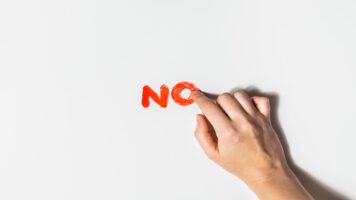Picturing Myself as a Photographer

Personal Development
March 3, 2016
Guest Author
Topics
Guest Posts, Ian Whitfield Photography, PhotographyThis post is a part of our 2016 Lead Change Group Guest Blogger Series. Today we are pleased to introduce you to Ian Whitfield from Ian Whitfield Photography.
Photography. Something I've wanted to do for a good while. Life learning. Something for me. And something to give back. I wanted to develop skills and an artistic passion - very different from my natural logical nature. It had to be part of my life, rather than a separate activity. I wasn't going to just go and do photography - and exclude the family. It needed to be seamless to what I was doing.
That led to the initial choice of camera - I didn't want a professional-level DSLR - simply much too heavy, even if the image quality should, or could, be better. I chose a compact camera system with interchangeable lenses. This new experience is now 18-months old - I started running just in an automatic mode, exploring questions such as:
- How did the camera perform?
- What did the different lenses offer me?
- Was the camera achieving my objective of being part of me?
It was then time to consider the scary prospect of moving away from auto. A friend is a professional photographer and offers one-day photography courses - distilling his learning and experience into a quick "sheep-dip" experience. Would I remember everything or anything? The day gave confidence to start mastering the camera, rather than stay in the comfort of auto-mode. And nuggets of learning would filter back into my mind as I started exploring the many menu options.
So how do you learn? Push yourself to the edge of your experience. Then practice, practice, practice. I remember one family day out where fat fingers pushed a setting - I didn't notice, was not reviewing my work, and didn't know the impact until later - most of the images were unusable but that lesson was learned.
As the camera is part of me, that practically means accompanying me on dog walking and being on a steam locomotive (I volunteer on a couple of steam railways). I wanted a personal style - not necessarily photography perfection - but one that gives the feeling of being there, experiencing all that the activity brings. I mentioned perfection - the photos needed to be right for me and I needed confidence in my production. So I started to edit my photos, to make sure I was happy with what I was producing. As a sanity check, my son acts as my validator and critic.
I mentioned giving back; I did want to share my photos, for others to like and enjoy. Around 9 months ago, I set up a Facebook page, Ian Whitfield Photography, as the most convenient way to share, within the communities that I'm part of, and increase the exposure of the photos themselves. The page is now liked by over 1,000 individuals and although not particularly strategic in approach, has allowed me to interact with an increasing number of people. And the potential to move into a more strategic social media plan and become more commercial in my approach.
How have I increased exposure for the photos? Within each theme Facebook provides a range of focused groups and pages - some are interest groups, others focused specifically on photography, and many commercial retail pages. I can take a railway themed photo, provide commentary, and share out to over a dozen different groups and pages. One magazine regularly shares the images to its 230,000 followers. Others have contacted me to publish to hard print.
Where does the journey lead? That's not too clear presently. I continue to learn - an online photography course is underway. And I continue to practice - yes, practice, practice, practice. I continue to take my camera out with me, even when it's easier to leave it behind. It gives me motivation and drive - with the next step moving out into other social media and being more targeted in my approach. That requires organisation and focus - while remembering the fun and satisfaction of myself, and the pleasure given to others in a growing global community.
Ian Whitfield is an amateur photographer, volunteer steam locomotive driver, and an engagement manager at a global IT outsourcing business. Ian's photographs can be found at https://www.facebook.com/





Hi, Ian – thanks for this interesting and potentially VERY useful post:)
I share your interest in photography, although I have not yet taken the plunge to the level you are at, so I’m a bit jealous.
I think creating an image using a camera is one of those powerful experiences where technology and creativity both play important roles. As you pointed out, you have to learn how to use the instrument of creation and this learning process is an ongoing one.
Your decision to forego the DSLR option was particularly interesting to me, since I recently bought a very entry level DSLR camera (which has been resting on my shelf ever since). I have a fairly good regular camera, but I need to make the jump to the DSLR, partly to justify the cost and partly to learn more about the technological side of creating impacting photos. Nice to know that some folks do just fine without the latest and greatest:) …
Your organization of your images into themes is another good idea. I have done this, but to a very superficial level. I create images for my own blog posts and for several FB pages which I administer, so I have folders for me, them, and the church, but that is as far as I have gone. You move me to get much more organized in this respect … I might be fascinated by the groupings that emerge from doing so.
Thanks for a very interesting post that is inspiring me to become more intentional about one of my activities:)
John
Thanks John for you kind words and glad that they are of some use – I guess the individual you are will lead to the photography that means something to you.
Most importantly take your camera out and force yourself to take photos that are pleasing to you – I remember before having my Panasonic G6, using my phone for 100 consequent days – taking images in and around the garden, to help me notice life. Most helpful – even on the most dismal day, there’s beauty in capturing rain drops falling from the leaves.
On organisation, it’s abut workflow – do what is natural and works for you. And repeat it.
Thanks again – Ian